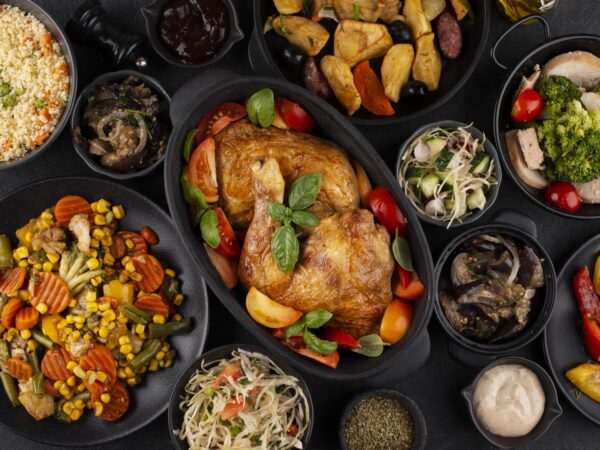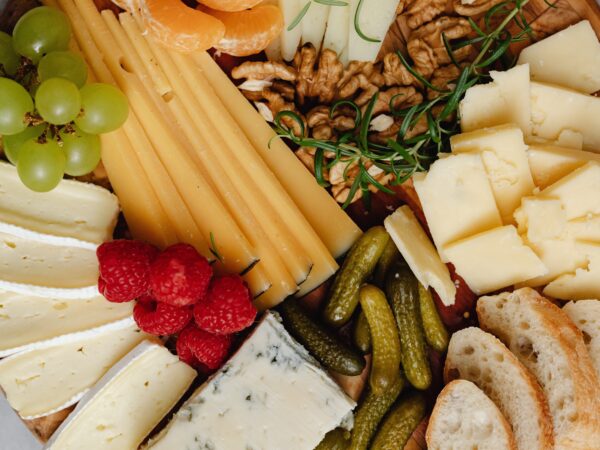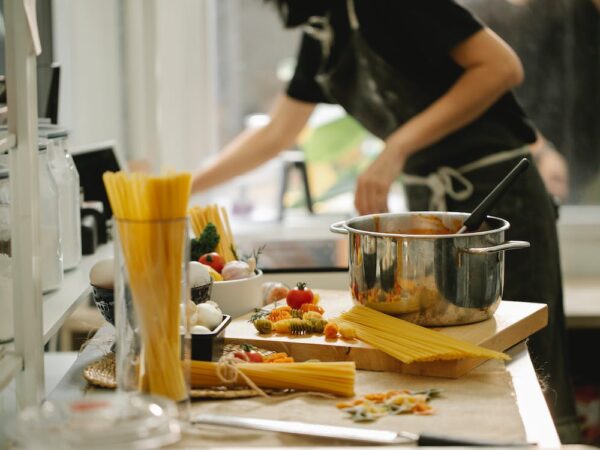Food is more than just fuel for the body. It is a celebration of cultures, traditions, and history. Food is a cause for gathering and bonding with family and friends. In this article, we explore tasting the world of food and how it connects us to other cultures.
Food: The Universal language
Firstly, Food serves as a bridge between different cultures, breaking down barriers and fostering understanding. Food is a universal language, accessible and enjoyed by people of all races and religions. We can all relate to the comfort of a hot meal on a cold day, the joy of sharing a meal with loved ones, or the excitement of trying a new cuisine.
Trying new cuisines can be an eye-opening experience. The flavors, spices, and textures can reveal so much about a culture’s history and traditions. For example, Indian cuisine is known for its vibrant spices and aromatic curries. These flavors are a reflection of the country’s deep-rooted history of trade and colonization.
Similarly, Japanese cuisine is renowned for its delicate presentation and fresh ingredients. It reflects Japan’s cultural reverence for nature and simplicity. Thai cuisine is known for its bold, spicy flavors, reflecting the country’s tropical climate and the importance of balancing sweet, sour, and spicy elements.
Food can connect people from all corners of the world. For instance, Ajiaco is a traditional Colombian soup made with chicken, corn, and potatoes. It represents the country’s colonial past and the blending of indigenous and Spanish influences. When Colombians gather to eat Ajiaco, they are celebrating their cultural identity and sharing it with others.
Food: A Window into History
Food has played a significant role in history, often reflecting events, traditions, and cultural exchanges. For example, Polenta is a dish made from cornmeal that has been a staple of Northern Italian cuisine for centuries. It originated as a food for peasants, who needed a reliable source of carbohydrates. Today, it is a dish enjoyed by many Italian families as a symbol of traditional Italian cuisine.
Similarly, Ceviche, a traditional dish from Peru, reflects a fusion of Indigenous, Spanish, and African influences. It is made with raw fish marinated in lime juice, spices, and onions, reflecting Peru’s coastal geography and history of cultural exchange.
Food can tell us a great deal about a culture’s history, traditions, and lifestyle. For instance, the Mediterranean diet is renowned for its heart-healthy benefits. It is a diet rich in fresh vegetables, fruits, nuts, and olive oil. This diet is a reflection of the region’s climate and olive trees that have been cultivated for thousands of years. It also speaks to the importance of socialization and community in the Mediterranean lifestyle.
In contrast, the fast-paced lifestyle of modern Western society has led to many people choosing convenience food over traditional dishes. Fast food, packed with processed ingredients and unhealthy fats, has become increasingly prevalent. This shift in dietary habits has contributed to the growing obesity epidemic in many countries.
Food: Exploring New Flavors and Tastes
Trying new dishes can be an exciting and rewarding experience. Traveling to a new country and trying the local cuisine is an adventure that can stay with you forever. For instance, Burmese cuisine is a lesser-known cuisine that is rich in flavors and traditions. Mohinga, a popular Burmese dish, is made with rice noodles, fish broth, and an array of spices. It is considered the national dish of Myanmar and is a prominent staple in Burmese cuisine.
Similarly, Peruvian cuisine is known for its diverse ingredients and innovative techniques. The country’s varied geography, from the Andes mountains to the coastal regions, has given rise to a wide range of dishes. Causa is a traditional Peruvian dish made with mashed potatoes, avocado, and seafood. It reflects Peru’s coastal geography and the country’s Spanish influences.
Tasting new foods of the world can be a way of connecting with people and broadening our horizons. For example, street food is a popular way of trying new dishes and experiencing local culture. In many countries, street food is a vital part of daily life, offering cheap and delicious meals that reflect local culinary traditions.
Conclusion:
Food connects us to other cultures through traditions, history, and flavor. It transcends language barriers and forges bonds between people. There are many weirdest foods in this world.
However, Tasting the world through food is an adventure that can broaden our horizons and deepen our understanding of other cultures. So, let us all embrace the world of cuisine and savor the flavors and tastes that it has to offer.











